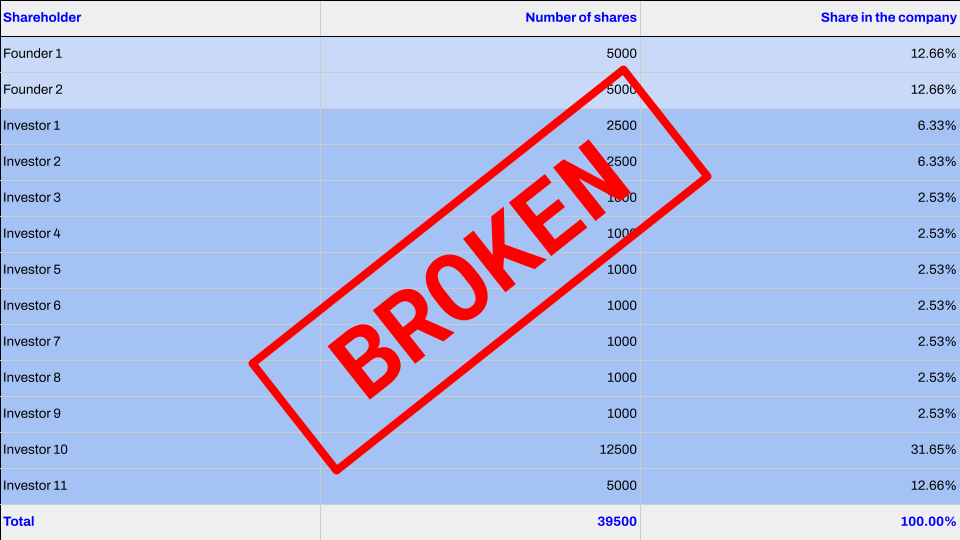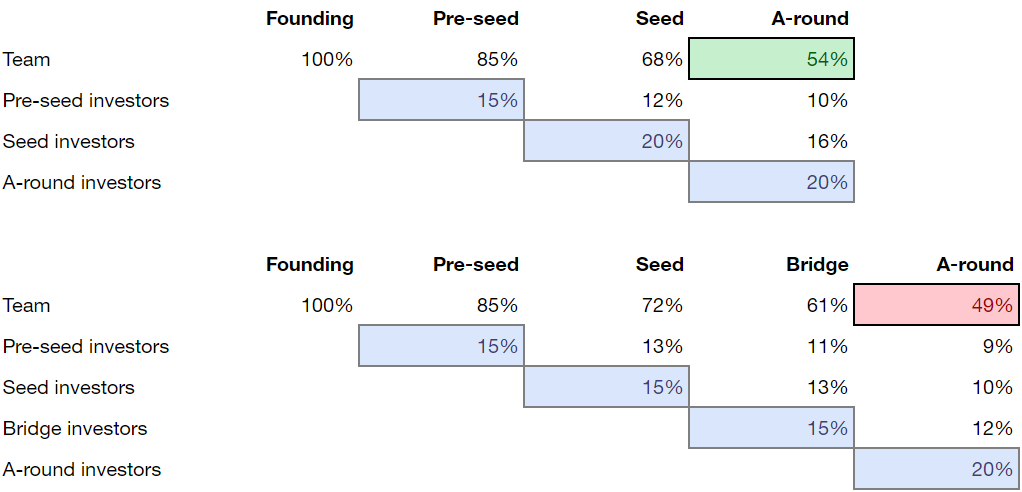-

How to Find Product/Market Fit Using Metrics
As seed-stage investors, we often invest in companies in search of product/market fit. While some founders have a clear strategy for working their way toward product/market fit, quite often, we see founders who are mystified by the concept and are not systematically working toward it. In this blog post, I share some thoughts on how to systematically work toward product/market fit and use metrics to assess progress. What Is Product/Market Fit? Product/market fit is the sweet spot where your product or service aligns perfectly with the needs and desires of your target market. It means that you’ve found the right
-

How to Get Noticed by VCs – 3 Tips for Founders
In this blog post, Iryna Krepchuk shares three tips for founders on how to get noticed by investors. Before I get into the chances of getting an investment, let me talk about your chances of even getting noticed (especially if you are at a very early stage). When I was applying for a job at a VC, I spent a while knocking on every door without understanding why I might be a fit for that particular fund. Now, I see similar behavior from startup founders who spend little time figuring out whether or not they are the right fit for
-

What is a Cohort Analysis?
When evaluating startups, we review customer acquisition, behavior, and retention. For this purpose, we often ask to see a cohort analysis. In this blog post, we dive a little deeper into what is a cohort analysis, what it tells, how to build one, and what should be taken into account when using it. What is a Cohort Analysis Cohort analysis is a powerful tool for understanding customer behavior over time. It helps businesses identify trends and patterns in customer engagement and retention, which can be used to make informed decisions about marketing, product development, and customer support. How Cohort Analysis
-

What is an Investment Agreement?
In the final part of our investment documents blog series, we will dive into the investment agreement. Whereas the term sheet is the starting point, the investment agreement is sort of the final step. The investment agreement is the document that sets out the investment details. It includes the actions required to close the investment and the structure of the investment itself. Besides, the investment agreement typically consists of the representations and warranties of the company and the existing shareholders. Once the investment agreement has been approved, everything is set for the investment. Investment Requirements for the Investment The investor
-

Startup Shareholders’ Agreement
Startup shareholders’ agreement is a key document in investing in a startup. Known also as the SHA, this document governs the roles and responsibilities of the parties from the investment to the exit of the company (unless, of course, replaced with a new one, e.g., in connection to a funding round). In this article, we look into key clauses that a typical shareholders agreement in a startup with external investors. Shareholders’ Agreement in a Startup A shareholders’ agreement is an agreement between the founders, investors, management shareholders, and the company. In the agreement, the parties set out their agreement on
-

What is a Term Sheet and What Should One Know About It?
Every funding round will be concluded with a set of agreements collectively called investment documents. These are the term sheet, the shareholders’ agreement, and the investment or subscription agreement. In this blog post, we look at some key elements of a typical term sheet. Later, we will dive deeper into the term sheet and address the shareholders’ agreement and investment agreement in upcoming posts. What is a Term Sheet? A term sheet is typically the first document to be signed between the investors and the startup. It is intended to lock down key terms of the investment and related conditions.
-

The Power of Collaboration: How Angel Investors and Venture Capitalists Can Cooperate
At Trind, all our partners are angel investors who became venture capitalists. Thus, it is unsurprising that we see tremendous value in cooperation with business angels. In fact, our investment thesis relies heavily on the collaboration between us and angel investors. In this blog post, we dive deeper into the different cooperation opportunities that angel investors and venture capitalists have, resulting in mutual benefits and increased startup success. Referrals, Co-Investments, and Follow-On Funding Angel investors, renowned for their vast networks, possess a unique ability to identify promising startups at their early stages. By partnering with venture capitalists, these angel investors
-

How to Fix a Broken Cap Table?
Our previous article was about the importance of an investable cap table. After that article, we got approached by founders asking how to fix a broken cap table. While the best way to avoid this situation is to not give out too much equity in the first place, other tools can be used to solve the problem. In this article, we take a look at some of these tools. Avoiding Overdiluted Cap Table To keep the cap table investable, the best solution is to avoid overdiluting it. While dilution is inevitable in equity investments, some ways can be used to
-

Cap Table Management in Funding Rounds
A healthy cap table is essential to ensure the company’s investability going forward. In this article, we look into a healthy cap table and how to take the cap table into account in future funding rounds. Why is cap table management critical? As investors like to maximize the return on their investment, trying to minimize the valuation is quite common. However, the investors should not be too greedy: Getting greedy in acquiring a stake is not necessarily beneficial to the investor. By taking too much equity, the investor may mess up the cap table so that the founders and key
-

What is a Good CLTV to CAC Ratio?
As a startup founder, growing your customer base cost-effectively is essential. One way to measure the efficiency of your customer acquisition efforts is by looking at the ratio of your customer lifetime value (CLTV) to your customer acquisition cost (CAC). In this blog, we will define CAC and CLTV and provide a general benchmark for a startup’s good CLTV to CAC ratio. We will also discuss the factors that can impact this ratio and provide tips for ensuring that your CLTV to CAC ratio is healthy. Understanding the CLTV to CAC ratio can help you make informed decisions about your
